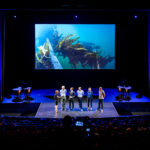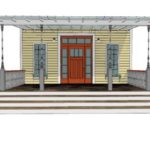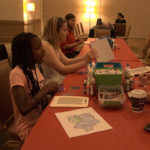As executive vice president of SIFE (Students In Free Enterprise), an organization that integrates university-level business education with community-based projects, Bruce Nasby has seen what can happen when good intentions are backed up with good business practices.
In an Albanian village, for example, SIFE students have worked with 60 farmers to replace their illegal marijuana crops with medicinal herbs, allowing the farmers to net more than $300,000 the first year. In Vietnam, students helped a women’s textile cooperative slash production costs by 20 percent and bring their products to new markets. And in Texas, students taught personal-finance and job-application skills to prison inmates, contributing to a dramatic reduction in recidivism, 5 percent for program participants versus 65 percent for non-participants.
There are approximately 6,500 more SIFE projects operating at 1,600 universities in 39 countries, all combining, as SIFE’s slogan sums it up, “A head for business [and a] heart for the world.” Working with faculty and volunteer business leaders, SIFE students learn to collaborate and manage resources.
In 2001, the organization launched the SIFE World Cup, which invites the top team from each participating country to compete for the title of SIFE World Cup champion, judged by a panel of international business leaders.
In 2010, SIFE began offering live webcasts of its annual World Cup competitions, which has exponentially increased the program’s educational reach. Last year, 3,000 people attended the World Cup at the Kuala Lumpur Convention Center in Malaysia. “Kuala Lumpur was a wonderful place,” Nasby said. “But tens of thousands more [SIFE program participants] could not afford to go there, obviously. But they were able to experience the event through webcasting.” Approximately 20,000 people watched the World Cup online during the event, he estimated.
As SIFE teams all over the world watch other teams present their projects, “many of them will copy each others’ projects and learn from each other,” Nasby said. The presentations remain on YouTube, where they “get passed around and re-clicked and retweeted, which keeps the information moving all around the world, even after the event is over.”
Nasby’s responsibilities at SIFE include raising money and conducting site selection for the annual World Cup events. Because SIFE is a nonprofit, he said, “it needs to be in a location where there are donor prospects to help pay the bills.” Live webcasting has added benefits for SIFE participants, but also added expenses. In Kuala Lumpur, the Malaysian government assisted SIFE in getting local sponsors to help defray costs. “To do that kind of live feed,” Nasby said, “takes an awful amount of bandwidth and a lot of technology.”
It’s a trend that Nasby predicts will only accelerate. Just a couple of years ago, SIFE program participants “might have gotten together to watch the presentations on somebody’s high-speed computer system and a big-screen television,” Nasby said. Today, “young people all around the world can watch from their smartphones.”
Breakout
The Geography of Innovation
The list of SIFE World Cup champions demonstrates that great ideas come from everywhere. Since the event began in 2001, winners have included student teams from Zimbabwe, China, Egypt, Canada, Australia, Germany, and the United States. “We have done this event in London, Paris, Toronto, Barcelona, Singapore, Anaheim, and New York City,” to name a few, said Bruce Nasby, SIFE’s executive vice president.
The annual events are not just a competition. “They are also a celebration,” Nasby said. “What also happens at the international event is that students gain a cultural understanding, when you gather young people from 39 countries, it is an Olympic feeling. They are learning about the religions, cultures, and lifestyles of people from other parts of the world.”
More Resources
To find out more about SIFE and its global projects, visit sife.org.



